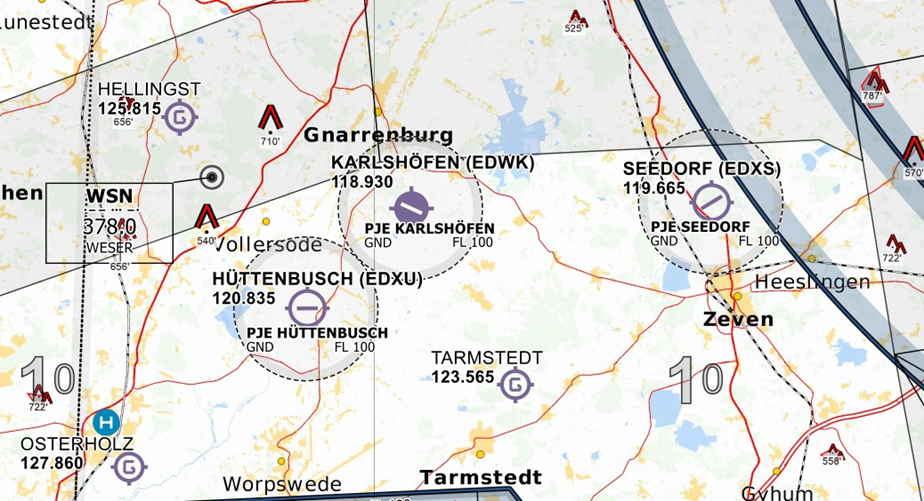Parachute jumping exercise (PJE)
This article is intended to convey the basic procedures of parachute dropping and to enable both pilots and controllers to handle them correctly.
Basics
Skydiving operations (PJE-OPS) can be expected at various airfields in Germany. The 5season usually begins in April and ends in October. On clear days, however, you can also expect active operations in some jump zone in the winter. In the summer, especially during the weekend, it is quite common for a radar sector to be busy with several droppings at the same time. This requires increased coordination, due to additional safety distances that must be maintained to the dropping procedure.
Aircraft types in the single-engine turbine (SET) category such as C206 Soloy, C208 Caravan, Pilatus Porter PC-6,
PAC P 750XL, but also multi-engine turbines (MET) such as DHC-6 Twin-Otter, Dornier DO-28 or Shorts SC7 Skyvan are often used. Exotic aircraft such as the Mil Mi-8, PLZ M28 Skytruck or even the Douglas DC9 are less common. Due to the high engine power, often in combination with STOL (short takeoff and landing) characteristics, high climb rates and even higher descent rates are to be expected. It is not uncommon for the aircraft to overtake the skydiver in freefall.
The usual dropping altitude for skydivers is 4000 m above ground or ~FL130. For training purposes or due to the traffic situation, lower drop altitudes are also possible (up to approx. 1000 m). For special events (“boogies”), drop altitudes of up to 6,500 m (FL210) are not uncommon - with oxygen supply in the aircraft.
Due to the sometimes extreme descent rates of the aircraft, the period from take-off to landing, takes around 15-20 minutes. Although the majority of parachute jumps in Germany take place at uncontrolled airfields, an air traffic control clearance must always be obtained from the responsible air traffic control center for parachute jumps in controlled airspace (see NfL I-59/07). An encounter with aircraft during freefall or gliding shall be avoided for obvious reasons.
Weather conditions
Appropriate weather minima must also be observed during skydive operations. The dropping aircraft must always comply with VFR weather minimas for the respective airspace at all times, i.e. when climbing, during the so-called “jump run” (horizontal flight into the wind at reduced speed for the drop procedure) and during the subsequent descent.
Skydivers must also maintain a constant view of the ground from the moment they leave the aircraft and shall not touch any clouds during freefall or gliding.
Jump zones
A basic distinction is made between permanent jump zones (AIP ENR 5.5-1) and individual jumps. Permanent drop zones generally have an upper limit of FL100 and a horizontal radius of 2 nm.
On ICAO charts, these are highlighted as a dashed circle and marked with the addition “PJE” as well as the lower (GND) and upper limit (FL100). As a pilot, you should always pay close attention to these areas and avoid direct overflights of the airfield - especially without radio contact.

